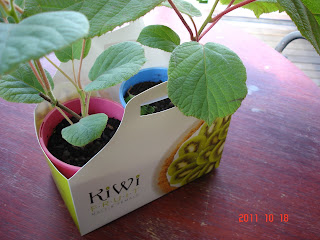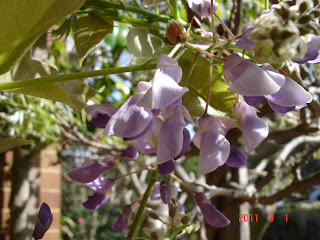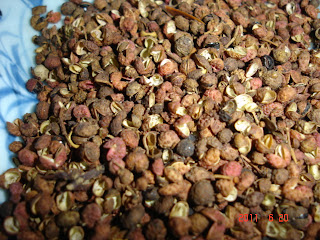
Printed in bold "Black rice tops the superfood hit list" briefly caught my attention while I was nonchalantly flicking the pages of a magazine in the cafe at the mall. I earmarked it so that I could show it to my wife, an avid follower of the "multi-grains" cooking regime, when she returned from her shopping. What was the big deal, you may ask. Just like the hits parade in the music scene, superfood is constantly being replaced by another new hit with the same old tune of promoting benefits such as anti-aging, detoxification, energy enhancement and immunity boosts. There is no definitive Top Ten hits list of superfood and I have long suspected that new food is regularly put forward, usually backed by persuasive advertising. However, there are still classical like apples and oranges but less likely to revive and spark a worldwide following to sing their praises.
Well, what actually interested me was the report that Black rice had joined and top the hits parade of superfood with salmon and blueberries as a nutrient and antioxidant-packed superfood, but at a fraction of the cost. Of course, it is comparatively much cheaper than blueberries; a small punnet of blueberries cost between $3.50 to $5.00 at our local fruit shop even at the height of its season.
Black Rice (Pulut Hitam) is as old as a folksong and has been sung and featured in many dessert dishes as black "sticky" rice especially among the South East Asian countries, but scientists at the 240th annual National Meeting of the American Chemical Society, in Boston, had only recently revealed it could actually be the greatest superfood. It also reported that researchers from Louisiana State University looked at samples of bran from black rice, discovering high levels of water-soluble anthocyanin antioxidants, which are responsible for the dark colours in many fruits and vegetables including blueberries.
Anthocyanin antioxidants have been found to help fight heart disease and cancer, as they help protect arteries and clear out harmful free radicals, Science Daily reported.
"Just a spoonful of black rice bran contains more health-promoting anthocyanin antioxidants than are found in a spoonful of blueberries, but with less sugar, and more fibre and vitamin E antioxidants," food scientist and lead researcher, Dr Zhimin Xu said in a media statement.
"If berries are used to boost health, why not black rice and black rice bran? Especially, black rice bran would be a unique and economical material to increase consumption of health-promoting antioxidants."
I do not know how long it will remain number one, so here is one of the old classical recipes for your collection. Please stay tune for the next number one in the hits parade.
Black Rice Porridge(Bubur Hitam) with Coconut Cream Recipe:
Ingredients:300g black glutinous rice (washed & drained)
7 cups water
2 pandan leaves (tied into knots)
1/2 cup sugar
1/2 teaspoon tapioca flour or cornflour
1/2 cup thick coconut milk
a pinch of salt
Method: Put black glutinous rice in pot with water and pandan leaves. Bring to a boil. Lower heat, remove pandan leaves then simmer for 45 minutes till rice is soften and porridge like. Add sugar and simmer for 10 minutes. Add salt.
Mix cornflour flour with 1 tablespoon of water. Stir mixture into pot to thicken.
Remove black glutinous rice porridge from heat and transfer into bowls. Drizzle with thick coconut milk on top before serving.




































